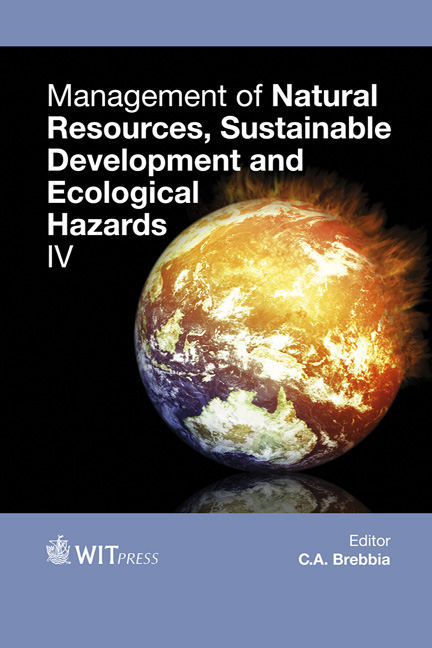Cleaner Fuels To Reduce Emissions Of CO2, NOx And PM10 By Container Ships: A Solution Or A Pandora’s Box?
Price
Free (open access)
Transaction
Volume
199
Pages
12
Page Range
195 - 206
Published
2015
Size
283 kb
Paper DOI
10.2495/RAV150171
Copyright
WIT Press
Author(s)
J. M. Vleugel, F. Bal
Abstract
Transport vehicles contribute to the ongoing rise in emissions of CO2 worldwide and emit large amounts of NOx and PM10. The growing demand for container transport is only sustainable if transport becomes ‘greener’. There are innovations, which unite economic and environmental interests. One example is the ongoing increase in ship size, which reduces the cost of shipping by reducing fuel consumption and emissions per container. Another example is the use of alternative fuel (blend)s in ship engines.
The central theme in this paper is to better understand the impact of replacing standard fuels in engines of large(r) container ships by alternative fuels (biodiesel, LNG/CNG) on CO2 NOx and PM10 emissions. This leads to the following questions: Can alternative fuels help to significantly reduce CO2, NOx and PM10 emissions in port areas? Does their use allow compensation of the growth in emissions due to the growth in container shipping?
It is shown for a typical seaport container terminal that cleaner fuels can contribute to lowering these emissions, even if the volume of containers handled by this terminal triples. The use of what seems, at first glance, to be cleaner fuels may, however, open a Pandora’s Box as a widespread use of organic biofuel may create other serious environmental problems, additional pressure on local food supply and social stability in already vulnerable areas of the world. More use of natural gas also raises serious environmental concerns.
Keywords
climate change, emissions, container transport, ports, fuels, trade-offs





